火曜日
kayoubi
Tuesday
Today's tale has to do with 火, fire.
I've actually told a bit of this tale before, here in the Kagrra, and Yoshitoshi entry. However, I mainly told the kabuki version, dealing with the theme, and there are a few variants and a great many different images of this story I'd like to share. So it shouldn't be too bad.
『八百屋お七』
Yaoya Oshichi, or "Greengrocer Oshichi", sometimes "The Greengrocer's Daughter".
昔々・・・
During a great fire in Edo, Oshichi, the greengrocer's daughter, took refuge in her family's temple. While there, she saw a young priest and fell in love with him.
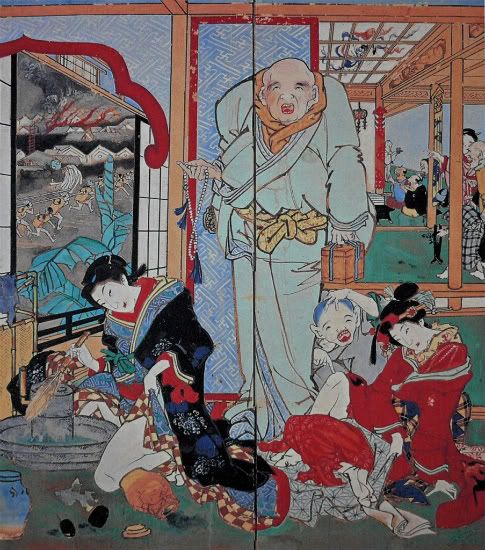
After the fire, she returned home, but was unable to think of a way to be able to see him again.
She decided that the best course of action was to run into him during another fire. Almost a year after meeting the priest, Oshichi herself set a fire to his temple. Waiting around for the priest to come running out, she was captured for the crime and sentenced to death.
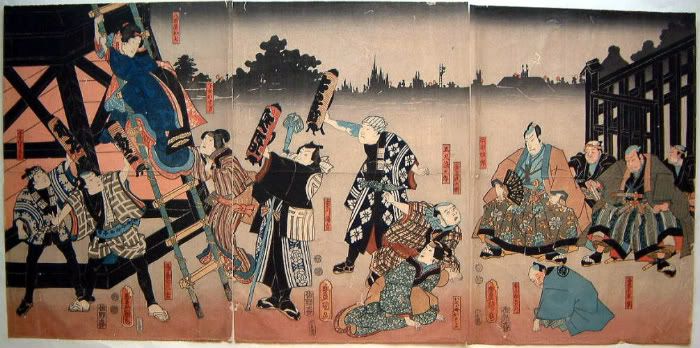
The magistrate who caught her, seeing the poor and rather vague girl looking around in fear, asked her "You're so young, you must be only fifteen years old." Oshichi was sixteen (lots of different numbers and dates are used, but I'll go into that later... the most popular one is that she's sixteen, however). Oshichi shook her head and said "No, I'm sixteen." The magistrate, who pitied her, tried to silently communicate to her what he was asking. Persons aged fifteen or younger were considered juveniles, and the death penalty would not be given to them. He repeated, "You're such a little thing, just fifteen years old, right?" Once again, Oshichi shook her head and said "I'm really sixteen." The magistrate had no choice, for Oshichi had honestly stated her age for everyone to hear, and she was burned at the stake.
The story paints Oshichi as a foolish child, a pyromaniac with silly ideas.
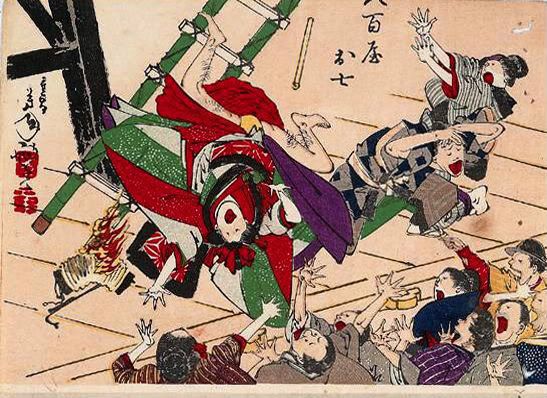
This image by Yoshitoshi also paints a silly picture, a kabuki performance of Yaoya Oshichi gone wrong. The onnagata, the male actor playing the girl's part, has toppled off of the ladder and is about to fall on the crowd, his hairy legs flailing and the lantern he was holding about to actually set fire to the theatre. The ladder actually is another famous motif of the Oshichi story, along with the iconic kimono pattern (if you know what you're looking for, you can tell exactly who the actor is portraying by clothing patterns alone... sorry to say I can sometimes, myself). These take higher significance in a different telling of the story. But first, Oshichi in kabuki.
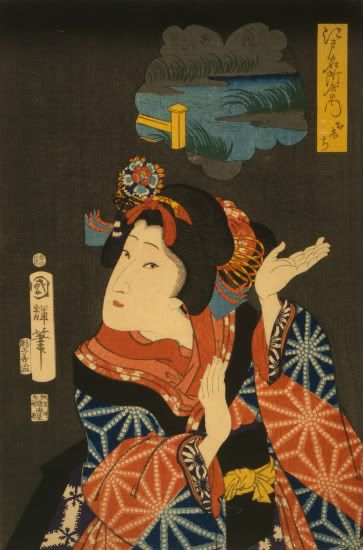
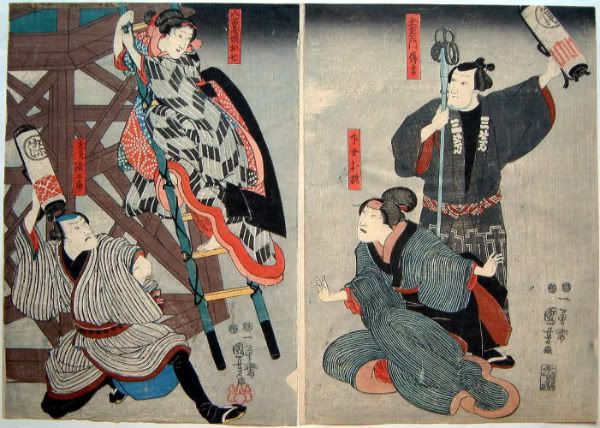
Publicity prints from theatres performing the play. The reason there are so many ukiyo-e prints (and all the women have the pointy widow's peak of a full katsura wig, or seem to be wearing a little hat in front) is that the majority of your famous artists in fact made their money doing promotional images and depictions of the popular kabuki of the season. Actors were put in costume and posed for pictures showing how feminine and lovely they were in character (the pieces of fabric worn on the head are used to cover up the shaven front part of the head that was the mens' hairstyle... so if you see a girl in an ukiyo-e with a little hat in front, she's really an onnagata, a male actor playing female). They were all very popular, like pop stars are today. Though, Yaoya Oshichi is still being performed today as well.
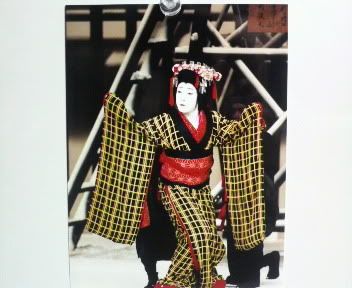

Oshichi's story, while a famous one, famously portrayed in kabuki, is actually best known as a bunraku play, another form of traditional Japanese theatre, in which the sets and characters are all miniaturized puppets.
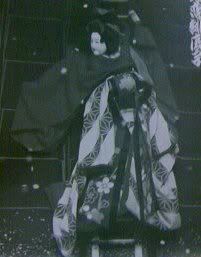
It is also the most popular version of the story, which portrays Oshichi in a more noble light.
During a great fire in her district, Oshichi, the greengrocer's daughter, and her family fled to their temple for shelter. Over the course of their stay, Oshichi's maidservant acted as a go-between between her mistress and a young acolyte at the temple training to be a priest. The two became lovers, and cared for one another deeply. After the disaster was over, Oshichi and her family returned home, where she longed to see her boyfriend. She sent her maidservant on errands to deliver letters, but as Oshichi was unable to go out after a certain hour due to the curfew in Edo at the time, and as it was inappropriate for a man and a woman to arrange to meet one another without their parents arranging for a marriage consideration (not to mention that the man in question was a priest in training), Oshichi was unable to see her lover.
Now, the ladder I mentioned earlier is told more romantically thus: yet another fire broke out, this time in her boyfriend's temple, and Oshichi, desperate to save her lover, snuck out after curfew to climb the tower to ring the fire alarm so he could be rescued in time.
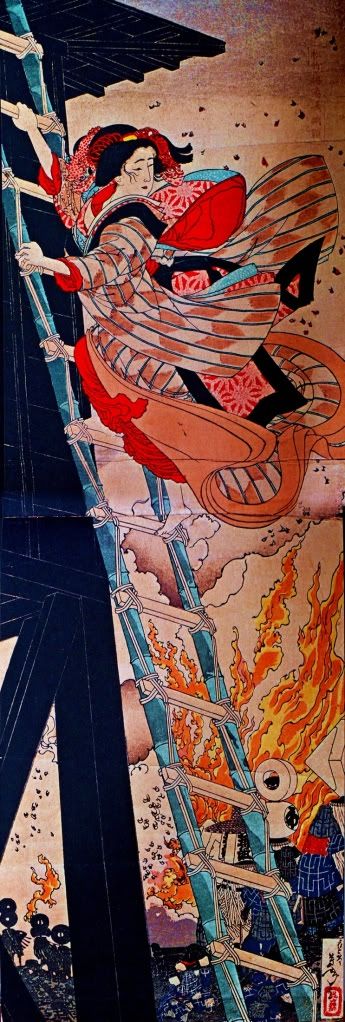
Yoshitoshi's work on the subject is just fantastic, and the most famous as well.
Another story goes that she simply climbed the tower to ring the fire alarm, and the act of ringing a false alarm is punishable by death.

But that doesn't make much sense. As Oshichi is innocent and it is her first love, we can forgive her for her misguided judgment, and let her character be slightly flawed. She longs to see him again, and therefore must recreate the incident which got them together in the first place. She sets fire to a nearby home, so that the disaster will once more send her neighbourhood running to the family shrine.
Unfortunately, Oshichi is caught. She dresses in her finest kimono (the very famous one which identifies her not only as Oshichi, but as a young and pretty girl of the early Edo period), and is determined to take the blame fully. Her lover, learning that Oshichi is being sentenced for a crime, fights through the crowds to save her.
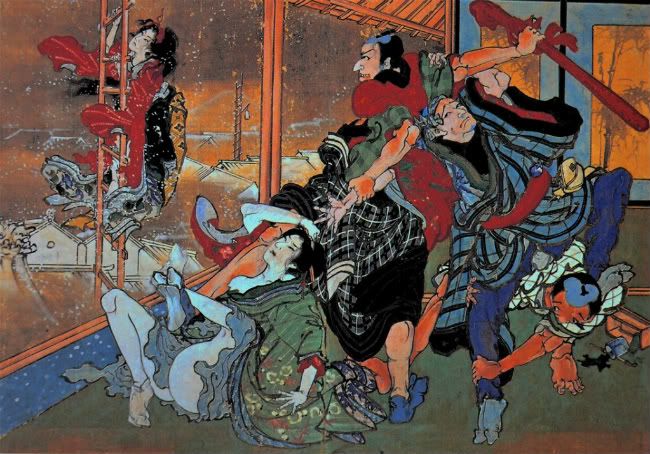
This one is by Ekin. It's actually my favourite depiction of Oshichi, besides Yoshitoshi's, of course.
Oshichi's maidservant catches up to him and delivers a final letter from Oshichi, which explains that she wishes not to implement him with her in any way, sullying his reputation and also subjecting him to punishment from the crime. Begrudgingly, the man agrees to the terms and goes on to take the tonsure and fully devote himself to the priesthood, praying for her soul. Oshichi is burned at the stake along with other arsonists, but is considered pure because of her good intentions and guiltless soul.
The End
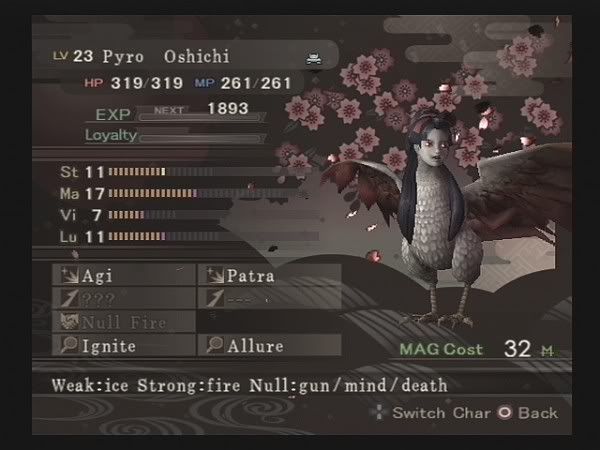
Oshichi in Devil Summoner. She's a pyro class, of course. Why is she a chicken? I'm not entirely sure... there are a great many works based off of Oshichi's tale, and for some reason, there was an image of Oshichi having the body of a chicken. Later, a novel was written in which Oshichi appeared to a monk in a dream with the head of a young girl, but the body of a chicken, begging for a Buddhist ceremony to cleanse her journey in the afterlife. I thought perhaps her Chinese zodiac sign might be that of a fire rooster, but the dates don't add up. In fact, it is said that Oshichi was a horse, and a fire sign at that. Fire horses like Oshichi are doomed to cause trouble and misfortune will fall upon them, and as such, in Japan, fewer babies are born on fire horse years, which occurs every 60 years, and has been traced back to around Oshichi's time. Therefore, her age and date can be figured out. So is it a true story? Actually, it is.
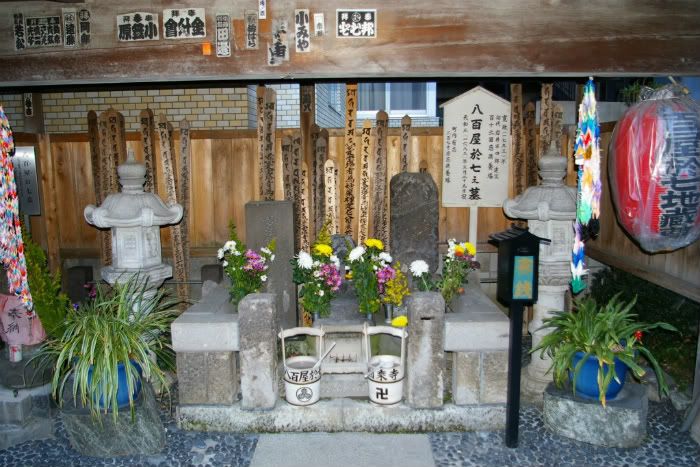
Oshichi's grave.
Yes, her actual grave. The reason why the numbers are often mixed up is because there wasn't a reliable registration of birth-dates at the time, and no one can remember if it was thirteen, fourteen, or fifteen years old that was exempt from the death penalty (though she would have been exiled to an island, albeit permitted to live). The neighbourhood in which Oshichi lived, the name of her lover, the name of the temple, and the date of the first fire, as well as the date of her execution can all be traced precisely, as well as her grave here, which is a very popular place to visit, especially among romantics, interested parties, and kabuki/bunraku fans.
No comments:
Post a Comment